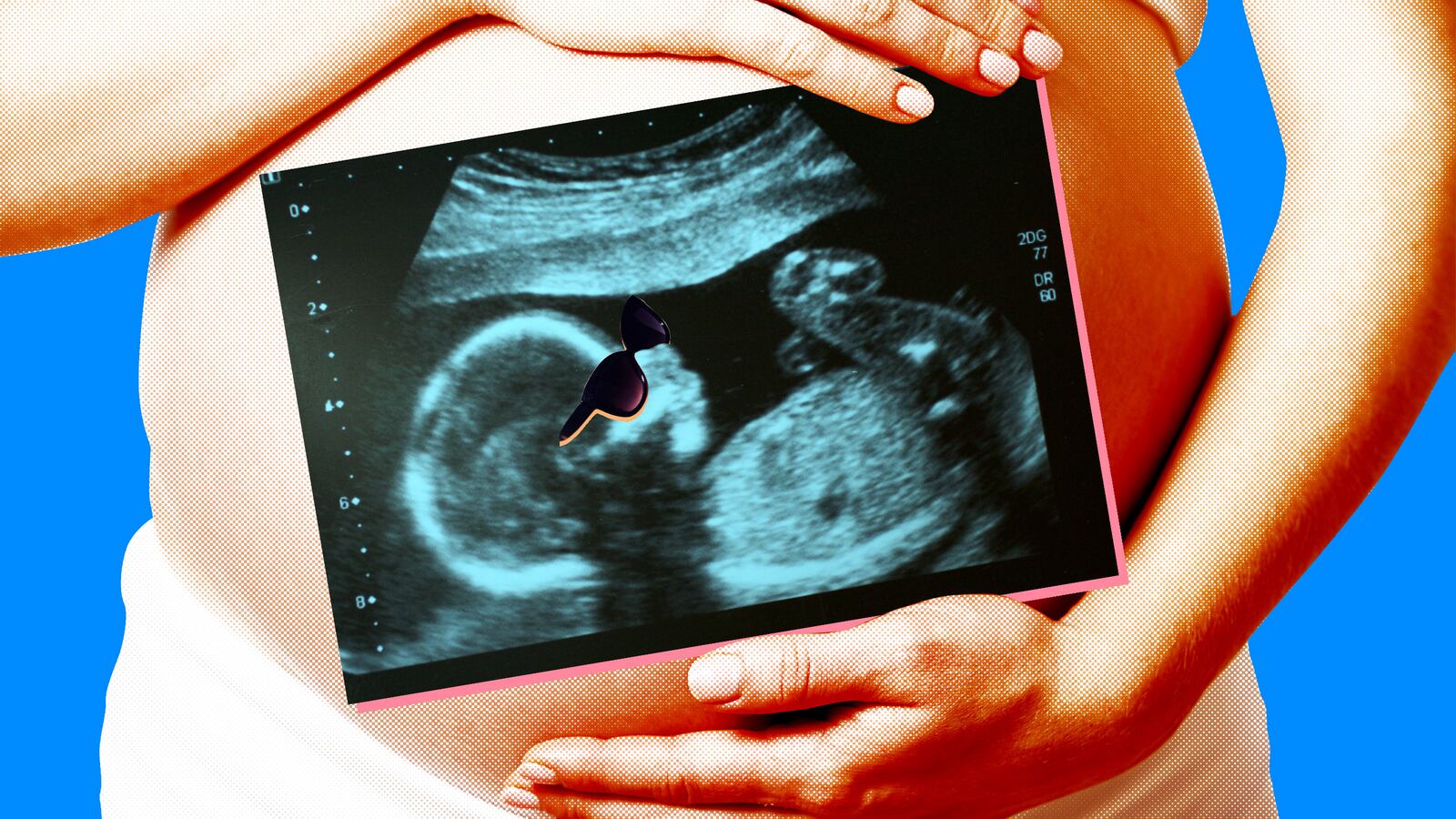Almost as soon as they’re born, babies seem to show a preference for “face-like” shapes—heavy at the top, narrower at the bottom.
Last year, startling news from Current Biology hit the headlines: Fetuses display the same preference while still in the womb—despite never having seen a face.
That news might be jumping the gun, said a doctoral student at the Eindhoven University of Technology in the Netherlands. In a paper published recently in the journal Current Biology, Anne Scheel and a group of colleagues argue that the study can’t give us reliable evidence about fetuses and faces.
The idea that face preference might already be in place before birth is a bigger deal than one might realize. One of the biggest remaining scientific questions we humans have about ourselves is what mental equipment we bring into the world with us when we’re born—and what we develop afterwards through experience of the world. Just a few hours after birth, newborns will already have seen actual human faces—so finding this preference in fetuses is important because it suggests that our brains are, in some way, set up to process faces before any real-world experience.
Vincent Reid, a developmental psychologist at Lancaster University and the author of the initial study that found fetuses preferring faces, was intrigued by the idea of studying fetuses—especially given the improvements in ultrasound technology. Together with his colleagues, he conducted an experiment that shone two different patterns into the womb: one was a face-like triangle, with two dots at the top and one at the bottom; the other, the same pattern but upside-down.
These are the kinds of patterns that have been used with newborns. They aren’t faces, but they are “face-like”: wide at the top and narrower at the bottom. Reid and his colleagues tracked whether the fetuses turned their heads to follow each of the two different light patterns, and reported that, just like newborns, the fetuses turned towards the face-like triangle more than the inverted one.
The paper caused a lot of jaws to drop. It “breaks new ground,” wrote developmental psychologist Oliver Braddick in a commentary on the work. Lisa Scott, another developmental psychologist who wasn’t involved with this work, is skeptical about the “face” interpretation—“I don't actually think that you can say anything about face processing from the stimuli that were used for this task”—but the method is “pretty amazing,” she told The Daily Beast. “I think it is a very important contribution to the field.”
What did the fetuses really see?
For Scheel and her colleague Stuart Ritchie, the claim was startling. “I was intrigued and wanted to see how you could potentially measure this,” said Scheel, whose background is in infant research, although she now focuses on studying the reliability of science itself. When she and Ritchie took a look at the paper, they weren’t convinced by the results. They started discussing their concerns with Reid, and also with Steven Jacques, who studies the use of light in medicine. (Disclaimer: Ritchie is a postdoctoral fellow at the university the author attends.)
Scheel and Ritchie were worried that the fetuses, or at least some of them, may not actually have been able to see the lights. The light levels may have been too low for those fetuses whose mothers had thicker layers of tissue, they argue. They also point out that Reid and his colleagues didn’t track whether the fetuses had their eyes open.
To judge what kind of light levels to use, Reid and colleagues used research done by Marco Del Giudice, who has tried to work out how much light makes its way into the uterus. Both the fetus study and the critique “are based on very limited data and a certain amount of guesswork,” he told The Daily Beast. “We don't know enough about fetal vision to make a confident judgment.”
But Jacques and another researcher, Nick Brown, pointed out a bigger problem: After making its way through layers of human tissue, the lights may have looked less like neat triangles, and more like eggish blobs.
Reid and his colleagues have responded to the criticism in a second paper published in Current Biology. On the point that more research needs to be done on what the fetuses can see, Reid told The Daily Beast, they agree with Scheel and her colleagues. “More could be done to improve this,” said Reid. “There’s no question about that.” But even the blobs are top-heavy or bottom-heavy, Reid and his colleagues point out in their response, and that seems to be the feature that drives the preference in newborns. The fact that the stimulus moves might help too.
Despite the criticisms, Reid stands by the conclusions of the original paper. In an ideal world, he would have liked to check whether the fetuses had their eyes open, and know exactly what they could have seen, but Reid argues that it’s a fair assumption that if the fetuses were looking more at the face-like triangle, they must have been able to see the stimuli. “Our data shows that the fetuses differentially respond to the stimuli that we used,” he pointed out.
Scheel isn’t convinced by that argument. In the critique, she and her colleagues argue that there are different ways of counting the fetuses’ responses. The method Reid and his colleagues used showed a difference—there were more head turns in the direction of the upright triangle than the upside-down one, and more head turns towards the upright triangle than away. But there are other ways of counting. Some of the data from the experiment is public, and when Scheel and colleagues tried a different kind of analysis, they found that only 21 out of the 39 fetuses turned towards the upright more than the inverted triangle. Those numbers “do not provide compelling support,” write Scheel and her colleagues. There are details they'd like to analyze that aren't in the aggregated data published with the paper, but the unaggregated data isn’t publicly available.
The data could suggest that the fetuses were seeing enough, and that they preferred the top-heavy stimuli—as long as they’re not a false positive. Michael Frank, a Stanford University psychologist who runs a large project aimed at improving infancy research, but wasn’t involved in either the fetus research or the critique, told The Daily Beast that it would have been ideal to have other comparisons in the experiment. This could have helped to check whether the fetuses really were really responding to seeing something, and that you wouldn’t get a lot of head-turning fetuses even without lights being shone at them.
It’s fair to debate the best method of counting, said Frank, and there isn’t a clear-cut answer, although “I think it is regrettable that Reid et al. have not shared their raw data,” he added.
But the real problem is that it’s possible to find patterns in data that look like signal, but are really just random noise. The more questions you ask of your data, the more dangerous this possibility becomes.
Committing to ask only a pre-defined set of questions, before doing the research, is one way to guard against this problem. This was not the norm in infancy research “up until a short time ago,” said Frank, “but researchers now are increasingly recognizing its importance.” Repeating the fetus study, with this kind of pre-commitment, would be a good way forward, he said.
And on that, there’s agreement—or something close to it. In their response, Reid and colleagues call for another lab to replicate their study. Scott suggests that some of the questions about the methods could be addressed in future research—and for Scheel, addressing those issues is crucial. Just repeating the same study is too soon, she thinks, given how expensive it would be, and how many questions there are about the methods: “I’d love to see work checking the steps in between.”





